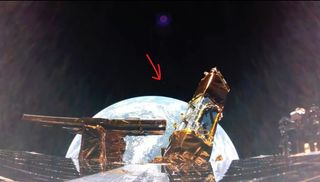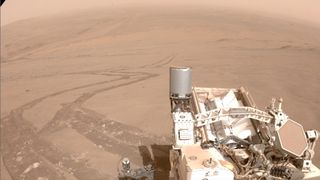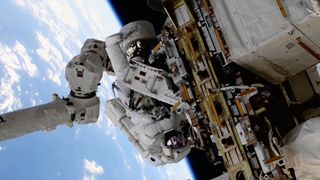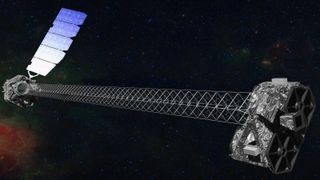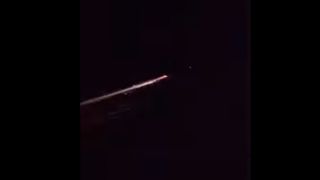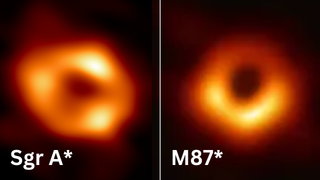Hairstyles and makeup choices for a hardcore Empress of the Terran Empire ducking her duties in Starfleet’s under-the-radar black ops espionage division Section 31 to run a space disco and casino on the outer fringes of Federation space means that nothing exceeds like excess, as the old saying goes. For “Star Trek: Section 31’s” Emmy-nominated makeup department head, Shauna Llewellyn, and Ryan Reed, the hair department head, this Paramount+ project set outside the rules and regulations of Starfleet meant that they were free to explore a wide variety of wildly…
Read MoreCategory: Space Stations
Space stations in orbit or planned
Watch Japan launch navigation satellite on its 1st mission of 2025 on Feb. 2
「みちびき6号機」(準天頂衛星)/H3ロケット5号機打上げライブ中継 – YouTube Watch On Japan will launch its first mission of the year early Sunday morning (Feb. 2), and you can watch the action live. An H3 rocket is scheduled to launch the Michibiki 6 navigation satellite from Tanegashima Space Center on Sunday during a two-hour window that opens at 3:30 a.m. EST (0830 GMT; 5:30 p.m. local Japan time). You can watch the liftoff live here at Space.com, courtesy of the Japan Aerospace Exploration Agency or directly via JAXA. Coverage will begin 40 minutes before the window opens.…
Read MorePrivate Blue Ghost moon lander sees gorgeous lunar eclipse from Earth orbit (video)
Blue Ghost, the “little lander” from Firefly Aerospace that’s headed to the moon, has captured the littlest lunar eclipse ever (as well as our hearts). Firefly contracted SpaceX to launch the company’s “Ghost Riders in the Sky” mission last month (Jan. 15) on a Falcon 9 rocket, out of NASA’s Kennedy Space Center in Florida. Since then, the lander has been camped out in Earth orbit, undergoing systems checks and preparing to light its engines for a translunar injection burn, which will propel the probe on a four-day trajectory for…
Read MoreNASA’s Juno spacecraft watches most powerful volcanic event ever seen on Jupiter’s moon Io
Even for Jupiter’s moon Io, the most volcanic body in the solar system, a recent volcanic event witnessed by NASA’s Juno spacecraft takes the biscuit. The event was just one eruption centralized in a newly found hotspot region of Io estimated to be larger than Lake Superior on Earth. The currently unnamed region is so powerful that the energy it belts out is equivalent to six times the energy produced by all of Earth’s power plants combined. The team behind these findings used data collected by Juno, which made flybys…
Read MoreNASA’s new SPHEREx space telescope to launch in February — it can do what the JWST can’t
In late February, if all goes to plan, a new character will enter NASA’s space telescope epic. It’s an eggshell white, conical probe named SPHEREx, which (get ready for a mouthful) stands for Spectro-Photometer for the History of the Universe, Epoch of Reionization and Ices Explorer. And, because it works with infrared light, SPHEREx is meant to reveal things even the trailblazing James Webb Space Telescope cannot. “Taking a snapshot with JWST is like taking a picture of a person,” Shawn Domagal-Goldman, acting director of the Astrophysics Division at NASA…
Read MoreMars was hot then cold then hot again. Could life have really survived there?
New research suggests that temperatures on ancient Mars may have fluctuated between hot and cold periods through a relatively short period during its lifetime of billions of years. But these hot and cold spells may have been detrimental to life if it existed on the Red Planet. Mars may be a dry and arid planet today, but scientists know that Earth’s neighbor was much wetter and much more like our planet in its ancient past. These new findings from a team of researchers at the Harvard John A. Paulson School…
Read MoreNASA astronaut Suni Williams sets new record on 5.5-hour spacewalk outside ISS (video)
Two NASA astronauts working outside of the International Space Station on Thursday (Jan. 30) were able to finally remove a faulty radio communications unit, succeeding where two previous spacewalks had been unsuccessful. The extended work needed to free the radio frequency group (RFG) by Sunita “Suni” Williams and Barry “Butch” Wilmore came at a cost, though, as the two ran out of time to accomplish all of the tasks planned for Thursday’s EVA (extravehicular activity). Williams and Wilmore, who launched together on Boeing’s Starliner spacecraft and are serving together on…
Read MoreAstronomers find hundreds of ‘hidden’ black holes — and there may be billions or even trillions more
Astronomers have discovered hundreds of hidden supermassive black holes lurking in the universe — and there may be billions or even trillions more out there that we still haven’t found. The researchers identified these giant black holes by peering through clouds of dust and gas in infrared light. The finds could help astronomers refine their theories of how galaxies evolve, the researchers say. Hunting for black holes is difficult work. They are the darkest objects in the universe, as not even light can escape their gravitational pull. Scientists can sometimes…
Read MoreSpaceX Starlink satellite sparks brilliant fireball as it falls from space over US (videos)
A SpaceX Starlink internet satellite fell from space in a blaze of glory overnight, lighting up the Midwest U.S. sky with a brilliant fireball. Stargazers across parts of Wisconsin, Michigan and Illinois witnessed the Starlink satellite’s fiery demise as it burned up in Earth’s atmosphere late Tuesday (Jan. 28) and were quick to share videos of the sight. “WOAH. Something big just broke apart over Northern Illinois. What a sight!” a skywatcher with the username boinksi wrote on the social media site X. A video with the post shows a…
Read MoreNASA X-ray telescope Chandra discovers black holes ‘blow’ on their food to cool it down
Anyone who has experienced the blistering pain associated with biting into a fresh apple pastry or taking a swig of hot coffee can attest to the importance of blowing on your food or drink before introducing it to your mouth. It turns out that black holes may perform the cosmic equivalent of this routine, “blowing” on blistering hot matter before they gobble it down. This supermassive black hole-food cooling process was discovered by astronomers using NASA’s Chandra X-ray telescope and the Very Large Telescope (VLT) to observe some of the…
Read More

